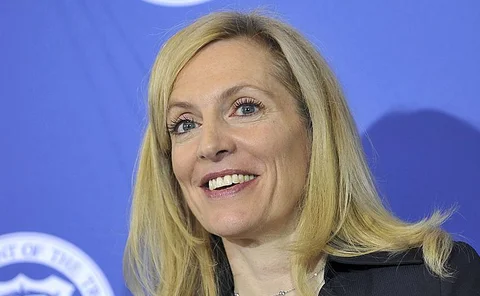Dodd-Frank Act
WHAT IS THIS? Properly known as the Dodd-Frank Wall Street Reform and Consumer Protection Act, this controversial US legislative package enacted a host of reforms agreed by the G20 nations in the aftermath of the financial crisis, including rules on the clearing, execution and reporting of standardised swaps. It also introduced the Volcker rule ban on proprietary trading by banks, and a new way of liquidating big institutions.
Fair value gains give JP Morgan DFAST edge
Bank was only one to record bigger capital lift from AOCI by end of test’s horizon
BofA, Citi among hardest hit in latest Fed buffer review
Five out of eight US systemic banks face higher stress capital buffer add-ons
US banks underestimate loan losses in Fed stress test
Systemic lenders predict 34% lower hit to their loan books in latest DFAST exercise
HSBC exhausts leverage headroom in Fed stress tests
Goldman Sachs worst performer among US banks
Coded swaps reporting plan delights some, but not all
Cost-busting code for swaps reporting could be tricky if banks lack internal standardisation
Banks eye ‘nirvana’ in machine-executable swaps reporting
Coded reporting requirements to save banks “millions” in compliance costs
Standardised approach extends reach over US banks’ RWAs
Gap between standardised and advanced RWAs at its widest ever for BofA, BNY Mellon, Morgan Stanley and Wells Fargo
CFTC approves start-up SDR ahead of US reporting overhaul
KOR Financial expects 30–50% cost savings as participants prepare to adopt US rule rehash
The Collins flaw: backstop turned binding constraint
US legislative tweak was meant to prevent banks from using their own capital models too liberally. It’s now something different
Banks balk at SEC backloading rule
Reporting requirements for expired security-based swaps “not justified”, dealers say
CFTC delays rewritten swaps reporting rules after industry plea
Firms still face multiple rounds of compliance to implement UPI and ISO standards
All top US banks below Collins floor
None of the eight systemic banks in the country above the threshold for the first time since 2015
Leveraging data in e-FX trading
A white paper explaining how, in a world where electronic trading has infiltrated virtually every aspect of today’s FX market, having access to data and the means to interpret it are fundamental components of a successful e-FX strategy
SA-CCR switch pushes Goldman below Collins floor
Early adoption at the end of 2021 adds $15 billion of RWAs
Wells Fargo RWAs drift apart
Standardised RWAs have increased for three consecutive quarters, putting pressure on the bank’s CET1 capital ratio
SEC’s Peirce sees legal risk for dealers in new swap rules
Anti-fraud provision in proposal could expose margin calls to “potential liability”
SEC stock loan disclosure plan won’t make markets more equal
The GameStop saga showed that securities lending is opaque. New rules are unlikely to improve things
Regulatory feedback adds $23bn to Goldman’s RWAs
The revision to the bank's standardised RWAs brought it closer to hit the so-called Collins floor
Brainard: stablecoins ‘front and centre’ of regulatory focus
Contender for top Fed role also called for activation of countercyclical capital buffer
Citi hits the Collins floor
Of the eight systemic banks in the US, Goldman Sachs remains the only one above the threshold
Seeking SCB relief, Goldman cuts equity investments
Plans for less capital-intensive balance sheet could shave 140bp off capital requirements
Archegos shows up US swaps reporting shambles
Problems with existing data mean SEC’s pending TRS reporting rules won’t bring the issue to order
Loan losses: Banks’ estimates out of sync with Fed’s
Wells Fargo worst performer in latest DFAST exercise
Morgan Stanley’s stress test estimate strays from Fed’s
Half of US systemic lenders lowball capital hits in DFAST 2021












